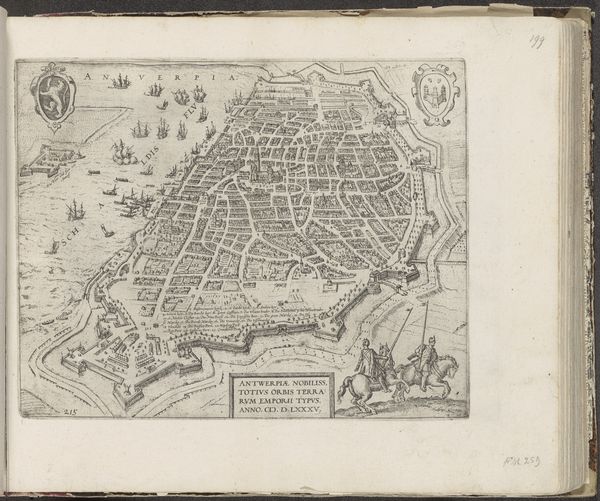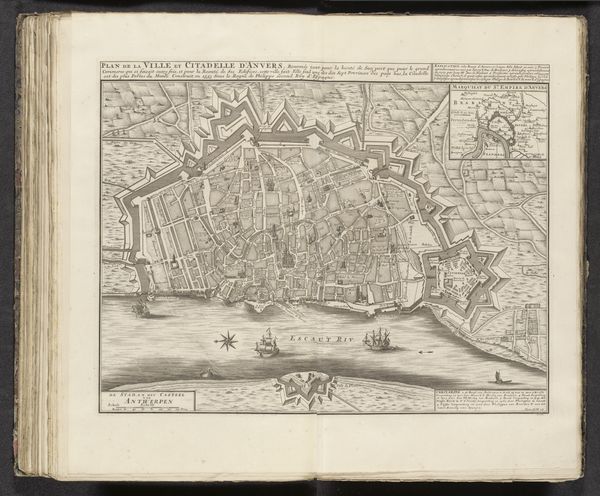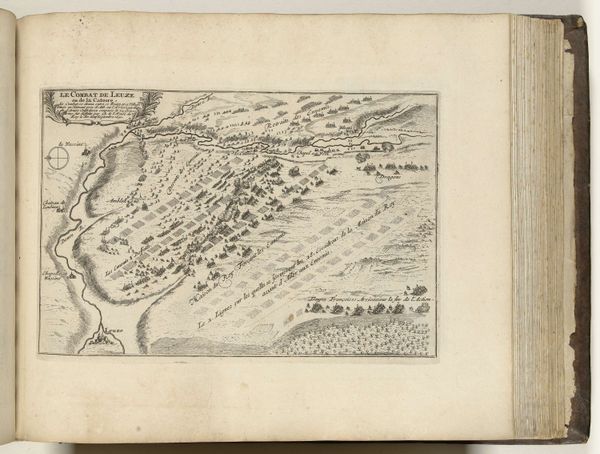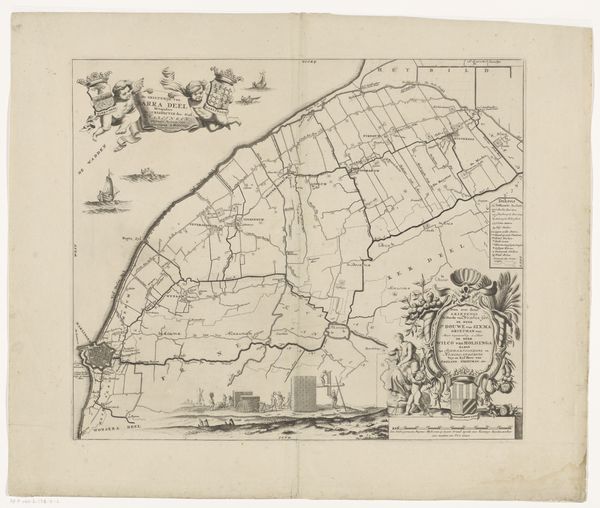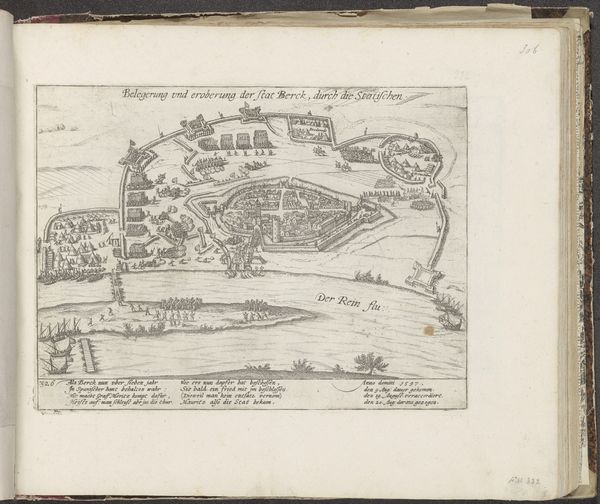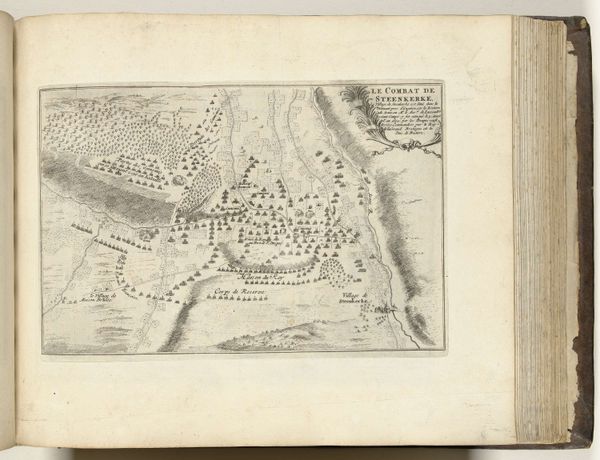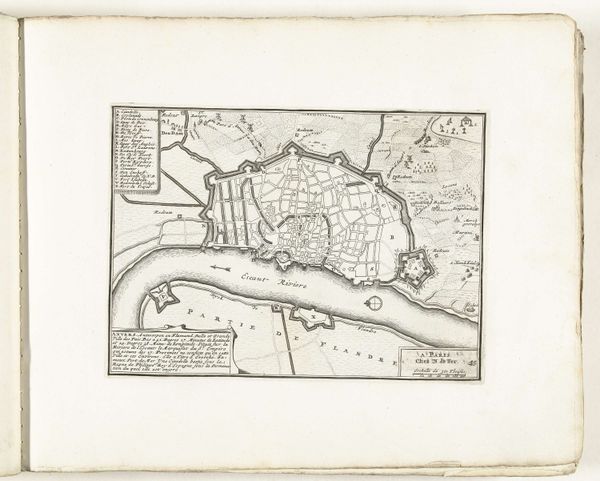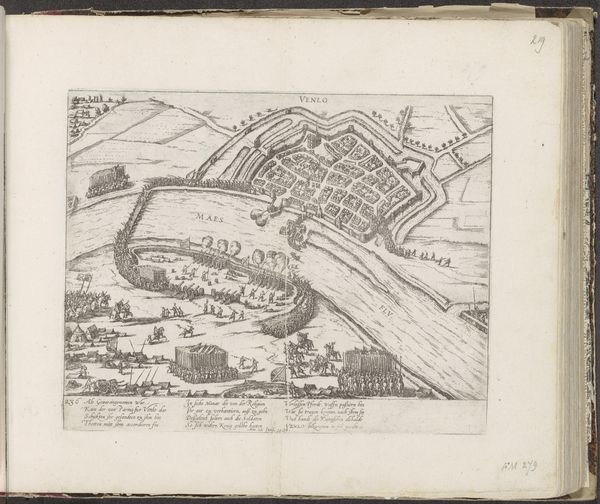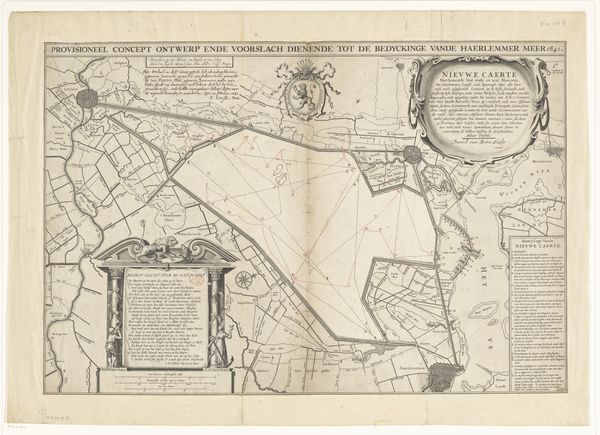
print, engraving
#
aged paper
#
toned paper
# print
#
pen sketch
#
sketch book
#
11_renaissance
#
personal sketchbook
#
pen-ink sketch
#
pen work
#
sketchbook drawing
#
cityscape
#
history-painting
#
storyboard and sketchbook work
#
northern-renaissance
#
sketchbook art
#
engraving
Dimensions: height 223 mm, width 275 mm
Copyright: Rijks Museum: Open Domain
Curator: This rather intricate engraving is entitled "Spaanse Furie: plattegrond van de stad, 1576", dating from around 1576 to 1579, attributed to Frans Hogenberg. Editor: There's something quite unsettling about the tightly packed structures, this visual density suggests disorder or unrest. The city almost seems to writhe on the page. Curator: Indeed. What we're seeing here is no mere topographical map, but rather a piece of historical reportage. The "Spanish Fury" refers to the sack of Antwerp by Spanish troops in 1576. This print offers a bird's-eye perspective on a moment of intense political and social upheaval during the Dutch Revolt. Editor: So, this wasn't simply about documenting the layout of Antwerp; it’s an account of state-sponsored violence made manifest through its very representation? It’s fascinating how the artist manages to evoke such palpable anxiety through such ordered lines. The texture of trauma made graphical. Curator: Precisely. Note the sharp delineations between the gridded city and the harbour filled with ships; the contrast underscores Antwerp’s vital role as a port city, but also its vulnerability to attack and siege. The very detail of the city speaks to Hogenberg's technical skill, rendering specific sites while the textual elements name actors involved and consequences. Editor: Do you think this level of detailing elevates the documentary aspect over artistic interpretation or emotional expression? Curator: I'd argue it’s a strategic choice. Hogenberg aimed for an apparent objectivity, lending greater authority to his depiction of atrocities that befell the city and fueled anti-Spanish sentiment. Editor: I suppose there’s a kind of eloquence in the raw, unadorned truth, making the city itself the central motif in conveying collective agony. Seeing such fine lines, yet knowing it captures a moment of brutality, leaves a lasting imprint. Curator: The way Hogenberg intertwines factual detail with an inherent commentary is both impactful and instructive for understanding a dark chapter in European history. Editor: It leaves one contemplating the burden of cities, always existing as targets, enduring witness, and ultimately symbols of human endurance.
Comments
No comments
Be the first to comment and join the conversation on the ultimate creative platform.
